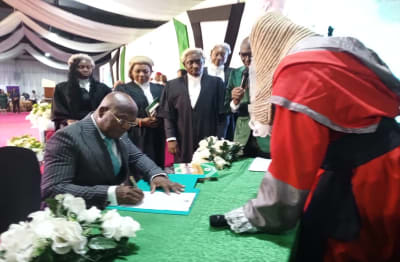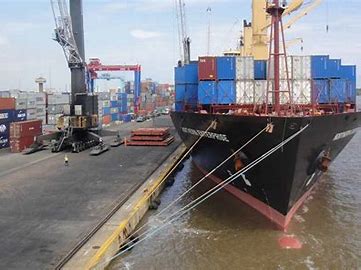FG Unleashes $350M Lifeline for Nigerian Shipping Firms After 20-Year Wait
FG Unleashes $350M Lifeline for Nigerian Shipping Firms After 20-Year Wait
By Achimi Muktar
After more than two decades of dashed hopes and bureaucratic inertia, Nigeria’s maritime sector is finally getting a long-overdue boost — and it’s worth a staggering $350 million.
On Monday, Minister of Marine and Blue Economy, Adegboyega Oyetola, issued a bold directive to the Nigerian Maritime Administration and Safety Agency (NIMASA): commence the immediate disbursement of the Cabotage Vessel Financing Fund (CVFF), a dormant fund that could redefine the future of indigenous shipping in Nigeria.
In response, NIMASA wasted no time. A Marine Notice has now been issued, officially inviting eligible indigenous shipping companies to apply for up to $25 million each, with loans offered at competitive interest rates for the acquisition of vessels that meet international standards.
This move, industry insiders say, could be the biggest shake-up in Nigeria’s maritime sector in a generation.
Established under the Cabotage Act of 2003, the CVFF was designed to empower Nigerian shipping firms with access to structured financing for vessel acquisition. But for over 20 years, successive administrations failed to bring it to life — until now.
“This is not just about disbursing funds. It’s about rewriting a chapter in our maritime history,” said Minister Oyetola. “We are not merely funding vessels; we are investing in a future where Nigerian shipping companies can stand shoulder-to-shoulder with international counterparts.”
He described the fund's activation as part of President Bola Ahmed Tinubu’s economic agenda, aimed at stimulating local content, job creation, and national economic resilience.
“A strong indigenous fleet is not just a matter of pride; it is a strategic national asset,” Oyetola added.
With over $350 million now potentially in circulation — and some projections suggesting that the disbursement could exceed $400 million — the impact on local shipping could be massive. Funds will be channelled through approved Primary Lending Institutions (PLIs) to ensure transparency and professionalism in disbursement.
Key goals of the intervention include:
Boosting indigenous fleet capacity
Reviving local shipbuilding and repair industries
Creating employment and reducing capital flight
Strengthening Nigeria’s position in the global maritime economy
While many in the maritime industry have welcomed the move, they also urge caution and accountability.
Captain Tajudeen Alao, President of the Nigerian Association of Master Mariners, hailed the decision as “good news,” but stressed the importance of rigorous screening of applicants.
“Some companies that were eligible ten years ago may no longer qualify today. We need proper vetting and clear rules,” he said.
Kayode Farinto, a former acting president of the Association of Nigerian Licensed Customs Agents (ANLCA), echoed that sentiment, warning against premature celebration.
“Until the funds are actually disbursed, we remain cautious,” he noted. “But if done properly, this could be a huge boost for an industry that’s been on life support.”
Olumide Fakanlu, ANLCA’s National Secretary, emphasized the need for the fund to operate as a revolving scheme—one that ensures sustainability by mandating loan repayment so that others can benefit.
The launch of CVFF disbursement is not just about shipping—it’s about sovereignty, economic power, and reclaiming Nigeria’s stake in the global blue economy.
Now, all eyes are on NIMASA and the Ministry. Can they follow through? Will this be the long-awaited turning point for Nigeria’s shipping industry?
Or will it become just another case of big promises lost at sea?
For now, the tide appears to be turning. But only time—and transparency—will tell.





















